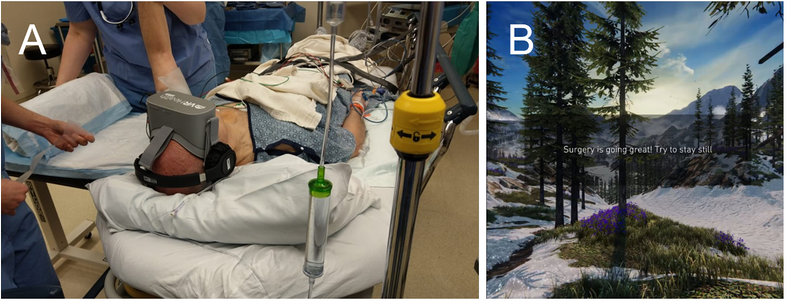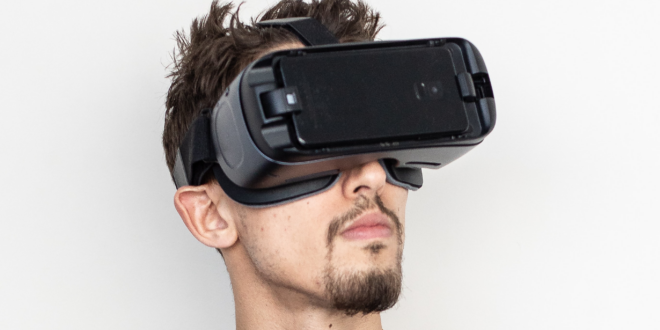as an anesthesiologist, Adeel Faruki, MD, MBAHe works with patients not only to control pain, but also anxiety. It can be of particular concern to patients receiving nerve block, rather than sedation or general anesthesia, for upper extremity procedures such as hand surgery.
Farocki, assistant professor at anesthesia In the University of Colorado School of Medicine. “Patients may feel scared, they may feel claustrophobic, so we started asking how we could reduce the amount of sedative medication given during surgery to patients receiving nerve blockages in upper extremity surgery. We thought, ‘Why not offer them a distraction?’”
This led to Recently published research A study of virtual reality (VR) immersion compared to monitored anesthesia care for hand surgery.
“As virtual reality is constantly evolving in the medical field, we realized that immersive experiences through virtual reality have the potential to benefit patients as much as we currently use for intraoperative therapies,” says Farocki. “We decided to look at patient satisfaction in a pilot study to compare the two groups’ experiences.”
Immersion in virtual reality during surgery
Farocki began this research as a resident at the Beth Israel Deaconess Medical Center at Harvard Medical School, working with his college mentor Brian O’Gara, MD, who had an interest in reducing the effects associated with anesthesia with patients who might not need it to manage pain.
“We realize that a lot of the medications we give patients, sedatives during the procedure, are safe but can carry side effects — low blood pressure, slowed breathing,” Farocki says. “If virtual reality can have a similar effect for managing patient anxiety without the side effects associated with anesthesia, that’s something we should look at.”
Farocki and his research partners assigned 40 participants who were undergoing elective hand surgery into two groups, one receiving intraoperative anesthesia care (MAC) and the other using virtual reality in addition to receiving a MAC. They operated from the hypothesis that the use of intraoperative VR would reduce sedative doses during elective hand surgery without detracting from patient satisfaction compared to MAC alone.
Participants in the virtual reality group watched immersive programs of their choice via a head-mounted monitor during surgery. As a primary result, Farocki and colleagues measured the intraoperative dose of propofol, a common anesthetic, per hour. Secondary outcomes included patient-reported pain and anxiety, general satisfaction, functional outcomes, and post-anesthesia length of stay (PACU).
The possibilities of virtual reality technology
Patients in the VR group received significantly less propofol per hour than the MAC control group. Although there were no significant differences between groups in overall satisfaction, pain scores in the PACU, or postoperative functional outcome, participants in the virtual reality group had a significant reduction in length of stay in the PACU.
“A number of participants in the VR group reported being fully aware but relaxed,” says Farocki. “The beauty of this is that if you have an effective way to manage pain for a particular surgery, you can give patients a VR headset, have them in an immersive environment, and as long as the nerve block doesn’t wear away, they can tolerate surgery very comfortably.”

Research participant using VR technology during elective hand surgery (left) and an example of the VR environment they could choose. (Photo provided by Adele Farooqi, MD, MBA, and co-researchers).
An additional benefit of VR apps during surgery, Farocki says, is two-way communication with patients. “The virtual reality screen allows you to send messages to patients, so you can tell them how long the procedure will take or ask how they are feeling,” Farocki says. “The VR group also had a much greater reduction in local anesthesia around the surgery site because they are awake and can express if they feel any pain. When your patients are very quiet, you often hide what you are administering, but with VR, the patients are fully awake.” .
Farocki notes that he and his colleagues weren’t looking at pain relief, but “whether you can maintain an adequate experience for patients with anesthesia during surgery.” He adds that there is interest in replicating the research O’Gara conducted at Beth Israel Deaconess Medical Center, which is looking into the use of VR in joint repair surgery.
“We’re looking to expand the use of virtual reality to more high-risk populations,” says Farocki. Patients undergoing surgery for a hip fracture, for example, may be older or have more health conditions, and anesthesia gives them a much greater risk. If we can give them an adequate dose of spinal therapy, while keeping them awake and relaxed and lounging in an immersive environment, that creates an opportunity to reduce the risks associated with anesthesia.”
There is also potential to study the use of virtual reality in reducing negative experiences for patients in the surgical recovery unit, and managing pain using non-pharmacological applications. “I really foresee a lot of uses for VR technology in the future, not to get away from the use of anesthesia, but to be a complementary therapy that benefits patients,” Farocki says.
Originally posted 2022-12-08 10:39:27.
